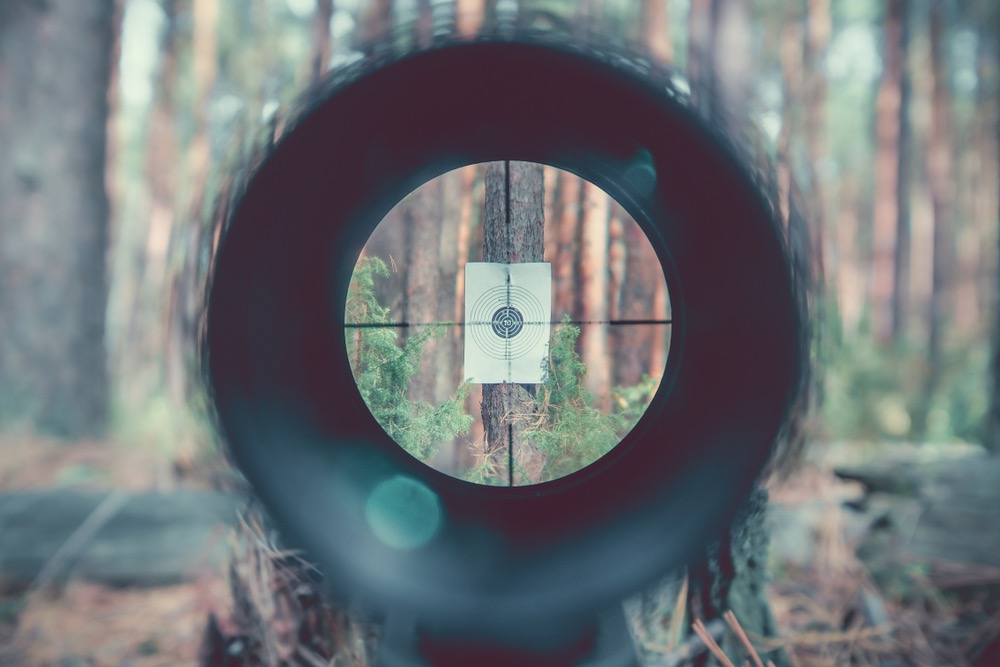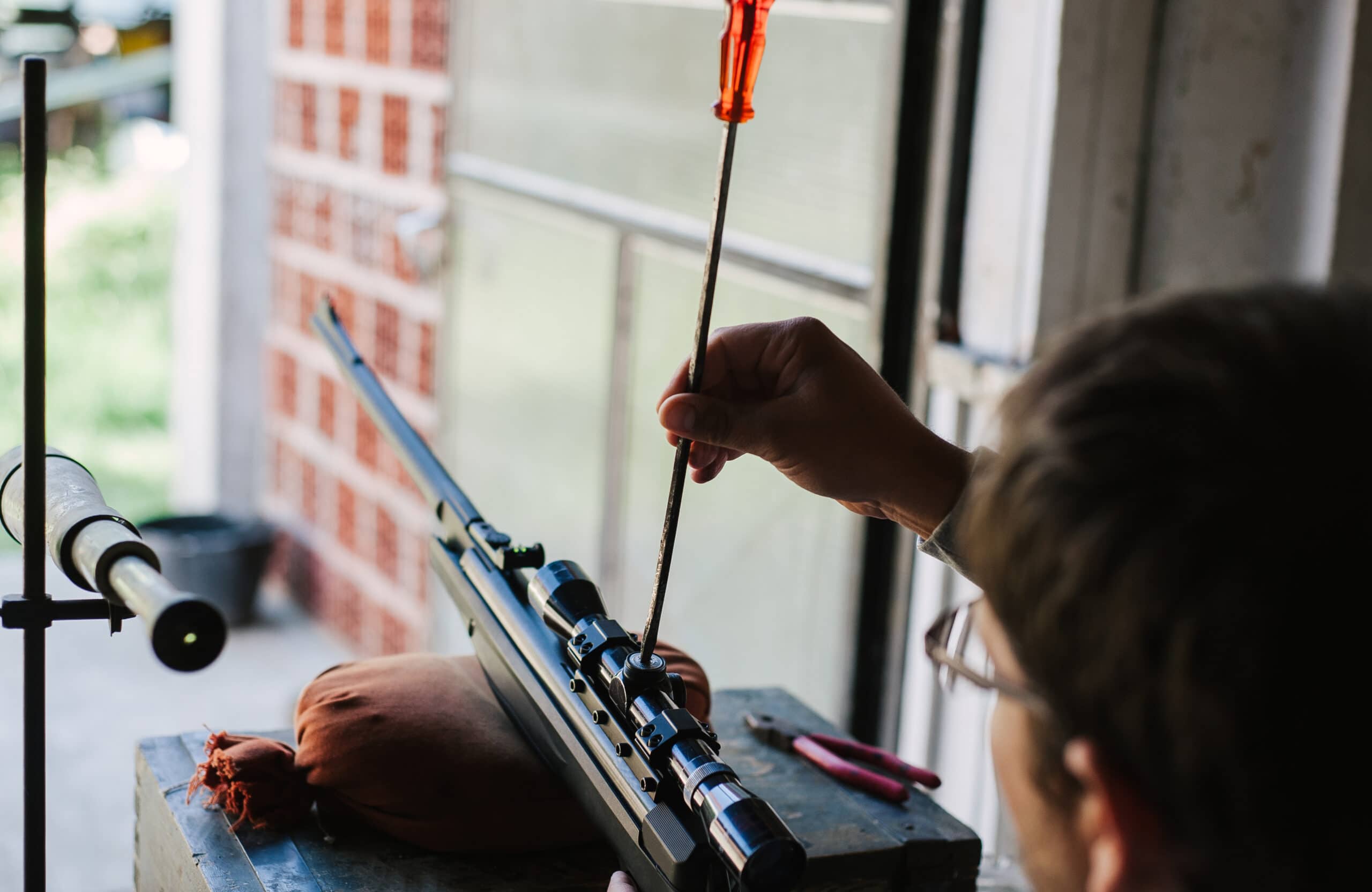What Distance to Zero an Air Rifle Scope? (2025 Guide)
Last Updated on

It doesn’t matter if you’re shooting a 50 cal off the back of a Humvee in Iraq or an airsoft gun to use in your backyard, zeroing the scope is a critical step to hit anything that you’re shooting at. But while most rifle shooters know to zero their scope at 100 yards, that advice isn’t practical for zeroing an air rifle scope.
With pellets subject to so many factors, you’ll need to change your scope zeroing distance when factoring where you’ll be shooting. Don’t worry, though; we walk you through everything you need to know so you never miss a shot.

Why You Need to Zero Your Air Rifle Scope

Zeroing any scope allows you to hit the target that you’re aiming at. That doesn’t change just because you’re shooting an air-powered rifle. So, if you want to hit your target, zero out your scope. Here are a few different factors that you need to consider when zeroing your scope.
Factors That Affect Zeroing
There are a few different factors that affect zeroing out your scope. For starters, you’ll need to account for the type of pellets and the rifle that you’re using. If you switch munitions, you’ll need to resight your scope to get an accurate measurement.
From there, you need to factor in the wind. If at all possible, you should zero in your scope indoors. That way, you get an accurate sight and can account for windage when you’re taking your shots later. If you are sighting in your scope outdoors, adjust for windage while sighting your scope as best as possible.
Recommended Distances to Zero Your Air Rifle Scope
There’s not a one-size-fits-all zeroing distance for an air rifle scope. Here are the three most common distances to zero your air rifle scope, depending on where you want to use it.
1. Indoor Recommendations

If you’re shooting indoors, you should sight your scope at 20 to 25 yards. That’s because indoor shooting is generally close range, and you don’t want to have your pellets soaring over the head of your target because you’ve adjusted for too much bullet drop.
2. Medium-Range Recommendations

This is the range that most people sight their air rifle scope to. Ideally, you should set your air rifle scope to 30 yards if you plan on using it in both short- and long-range situations. This gives you an excellent mix to work off of as you change distances.
3. Long-Range Recommendations

If you plan on shooting exclusively at long-range targets, you should sight your scope at 40 to 50 yards. Just keep in mind that even if you sight your scope this far, it’s not going to be easy to hit long-range targets.
You’ll still need to factor in windage and technique when trying to make these shots. Sighting your scope appropriately will make it easier, but it doesn’t make it totally easy.

The Final Adjustment
There are few things more exhilarating than lining up your scope and taking your shot. But that exhilaration can quickly turn to frustration if you don’t sight your scope correctly. Hopefully, after reading this guide, you have a better understanding of what you need to do to sight your air rifle scope properly.
This way, the next time you head out to the range or a competition, you can rest easy knowing that every round will go precisely where you want it to.
Featured Image credit: Evgenius1985, Shutterstock
About the Author Robert Sparks
Robert’s obsession with all things optical started early in life, when his optician father would bring home prototypes for Robert to play with. Nowadays, Robert is dedicated to helping others find the right optics for their needs. His hobbies include astronomy, astrophysics, and model building. Originally from Newark, NJ, he resides in Santa Fe, New Mexico, where the nighttime skies are filled with glittering stars.
Related Articles:
How to Clean a Refractor Telescope: Step-by-Step Guide
How to Clean a Telescope Eyepiece: Step-by-Step Guide
How to Clean a Rifle Scope: 8 Expert Tips
Monocular vs Telescope: Differences Explained (With Pictures)
What Is a Monocular Used For? 8 Common Functions
How to Clean a Telescope Mirror: 8 Expert Tips
Brightfield vs Phase Contrast Microscopy: The Differences Explained
SkyCamHD Drone Review: Pros, Cons, FAQ, & Verdict
